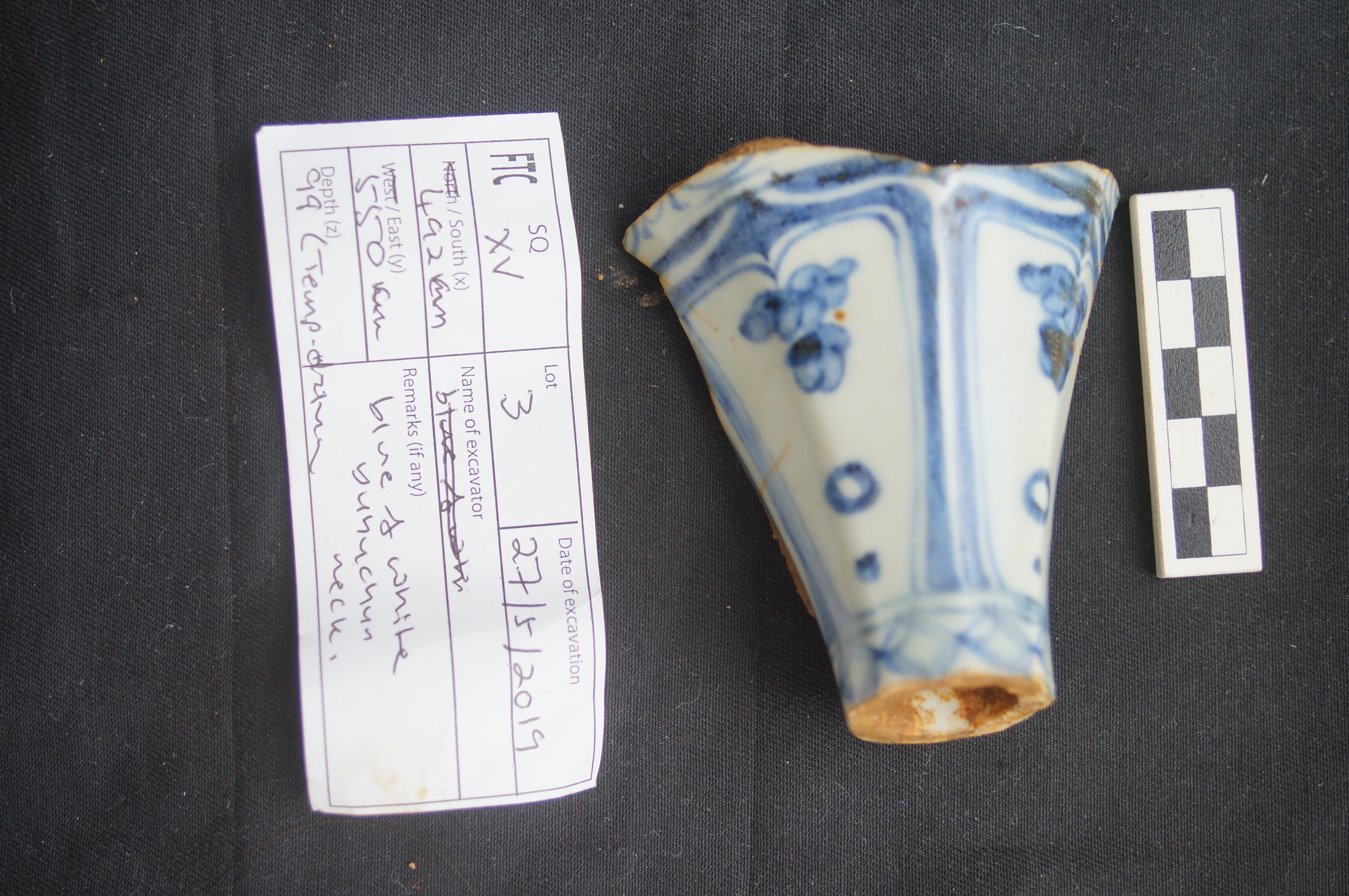Plotted Artefacts
The plotted artefacts from the 2018 dig and May 2019 half-day exposure for the launch yielded a total of 130–140 items comprising representative examples of porcelain (green, white, and blue and white), stoneware (buff, brittle, and mercury jar), and earthenware (fine paste, tempered, eavesboard tile, and brick). A few unusual or unique items included he neck of a blue and white Yu Hu Chun bottle (Yuan-dynasty), one fragment of a Thai Sawankhalok covered box (14th–15th century), glass beads in various colours (blue, yellow, and white), glass shards from a bottle (indigo blue), and glass blobs (remnants of melted glass).
Sifted Artefacts
All soil excavated in 2018 was sifted during the dig except 8 buckets of soil from square units XV, XIV, and IX. These were bagged in cement sacks and the soil was only sifted when the team was able to return to the site to carry out the sifting on 7 December 2019. The items recovered from the sieve comprised fragments of porcelain, stoneware and earthenware, beads, and dammar (tree resin used for incense). The sifted artefacts from the recent sifting have not been analysed nor have data about them been entered.
Salvage Artefacts
The artefacts from the FTC 2018/2019 salvage excavation comprise items recovered from three main areas: the Fort Canning Archaelogical Dig Site designated Fort Canning 2018/2019 Salvage; a test pit dug on 23 May 2019, at the location of the tools hed used for storing our excavation tools, in preparation for the Fort Canning grand opening scheduled for 27 May 2019; and the Fort Canning Spice Garden Pandan Bed. These items are considered salvage items as their specific provenances are not known, namely their unit, the depth at and layer in which they were found, or whether they were recovered from soil which had previously been dug and disposed of at another location. A large proportion of the items recovered between April and May 2019 were collected by park labourers who were carrying out landscaping work. As the site was under construction, he archaeological team was not allowed on the site. Instead, we worked with NParks to instruct the foreman and workers to recover any sherds or other items when they saw any.
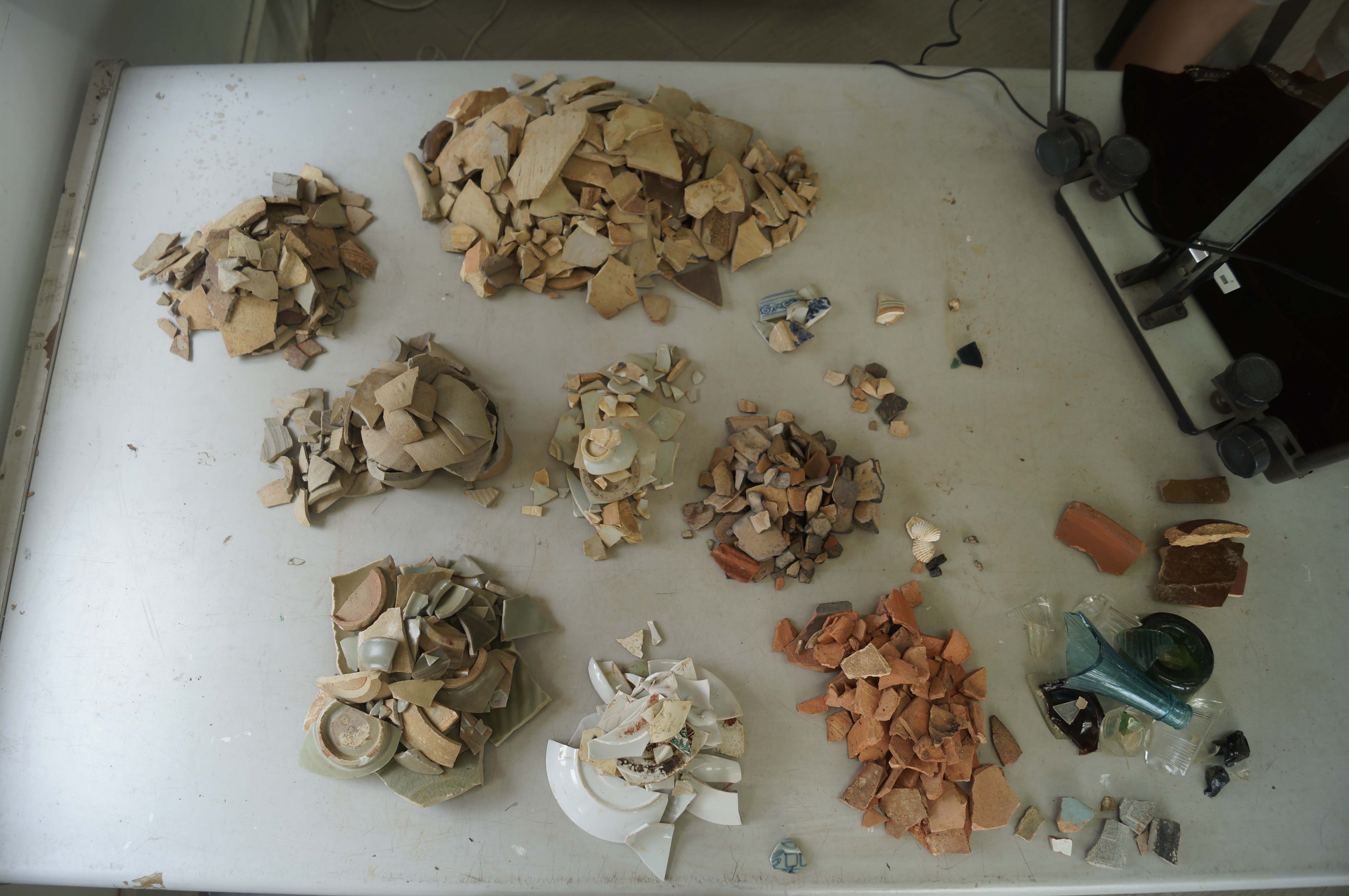
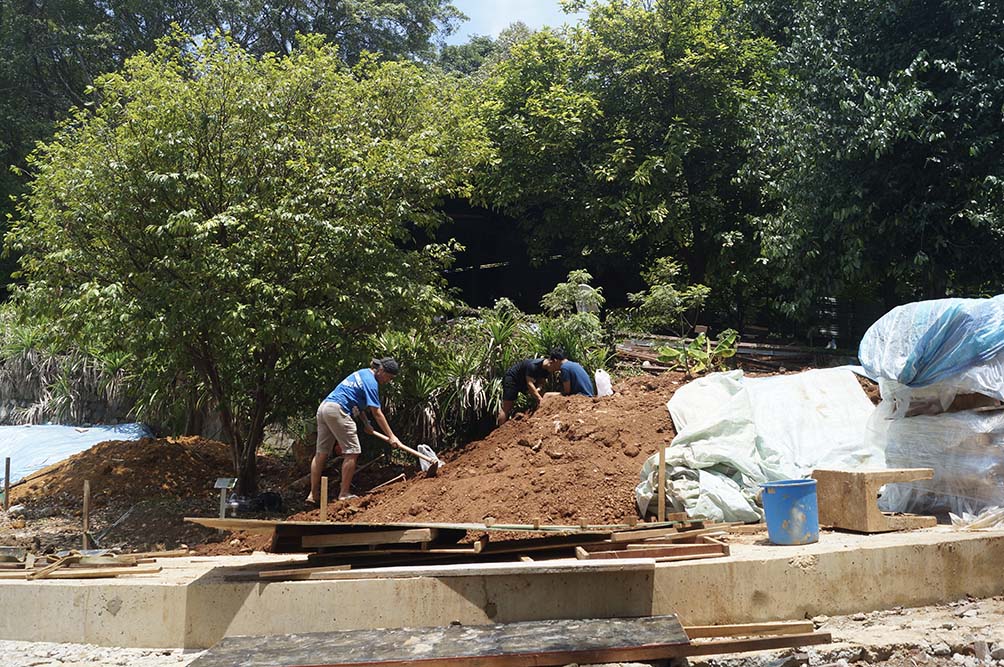
The Fort Canning Spice Garden Pandan Bed items were recovered from soil which had been dug and moved following landscaping work conducted in the garden. Goh and two of her student assistants spent a morning going through the displaced soil in the hope of recovering any artefacts.

The following pie charts show the breakdown of artefacts by material according to quantities (number of sherds) and weight (in grammes):



All the salvage artefacts were processed the same way: they were cleaned, sorted, labelled and their data entered into the database created for this project. The artefacts were sorted according to type of material: porcelain (subdivided into 14th-century versus 19th–20th century), stoneware (14th-century versus 19th–20th century), earthenware (14th-century versus 19th–20th century), and others (these were further sorted by material: glass, metal, construction materials, organic, plastic, etc). Following the first-level classification, the 14th-century artefacts were further sorted into more detailed categories. For example, 14th-century porcelain was further sorted into green porcelain, white porcelain, blue and white porcelain, and (in this project) iron-spotted Qingbai. The above pie chart shows the categories identified among the salvage artefacts.
Unique Items
Few unique items were recovered in the 2018 dig and on 27 May 2019. The bulk of the artefacts are similar to what has been excavated from the dig site since 1984 when John Miksic first excavated this site, which his work has demonstrated to be a workshop where glass recycling and gold working took place in the 14th century, as part of crafts associated with the palace.
Three items stand out. The first is a fragment of a Thai Sawankhalok covered box recovered from Square 29 on 28 October 2019 from the transitional layer between Lots 2 and 3, right at the top of the 14th-century level. The sherd was excavated by Caroline Ang, then an undergraduate student and Goh’s research assistant from NTU. The sherd plotted is the sherd in the right of the image (see Figure 8). Incidentally another fragment which matches the first sherd was found by workers in April 2019 (see left sherd in image below). The light olive-green watery glaze and the incised designs are representative of Thai green high-fired stoneware. Thai green-glazed covered boxes are rarely found in archaeological sites.
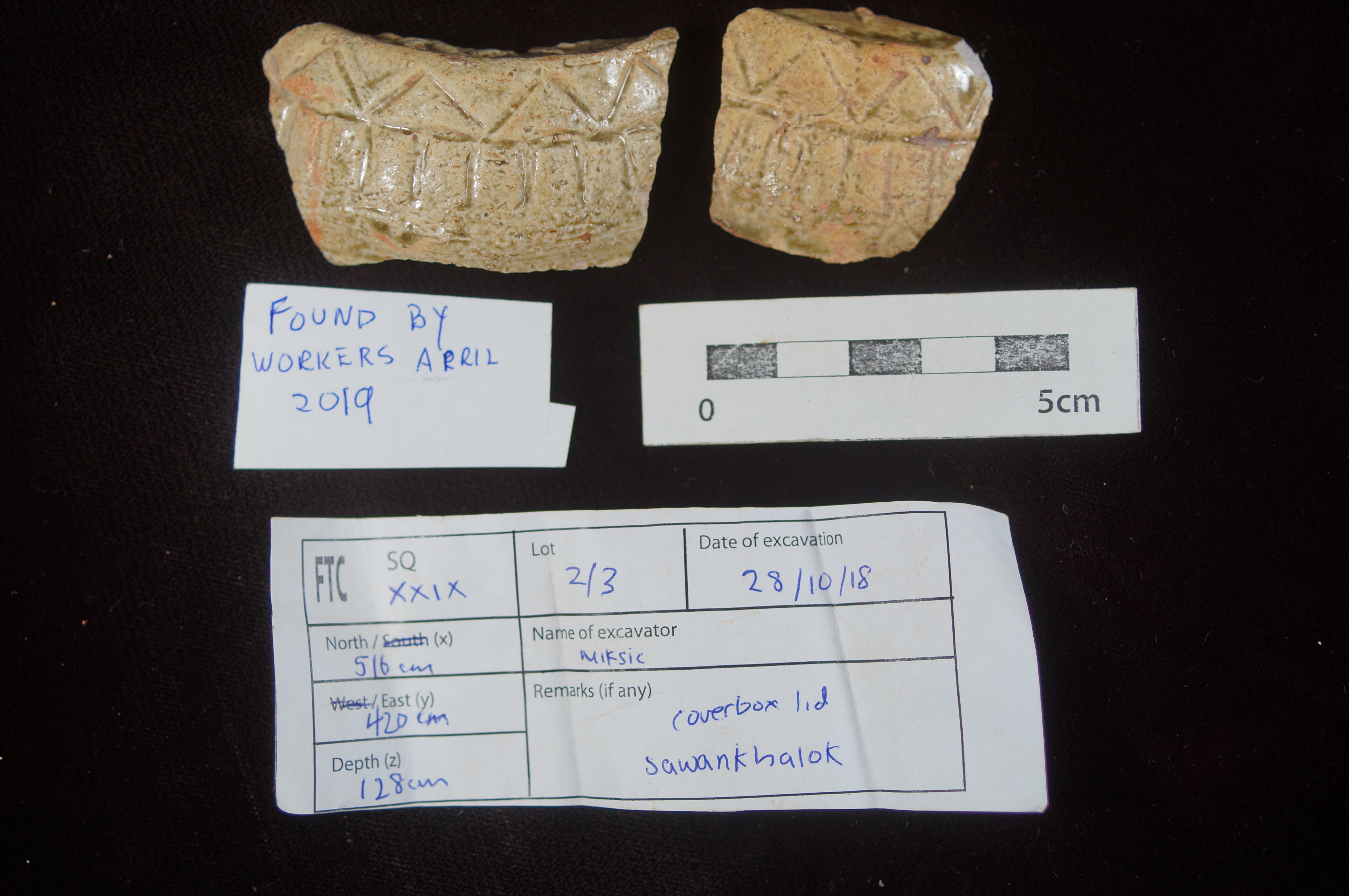
Another Thai artefact found during this project is a Sukhothai underglazed iron black and white base of a bowl. This was recovered from the soil deposition which came from the site during the renovation and landscaping works. This piece was found by two student research assistants Muhammad Hafiz and Gavin Goh on 12 April 2019 when they were combing through the back soil looking for artefacts.
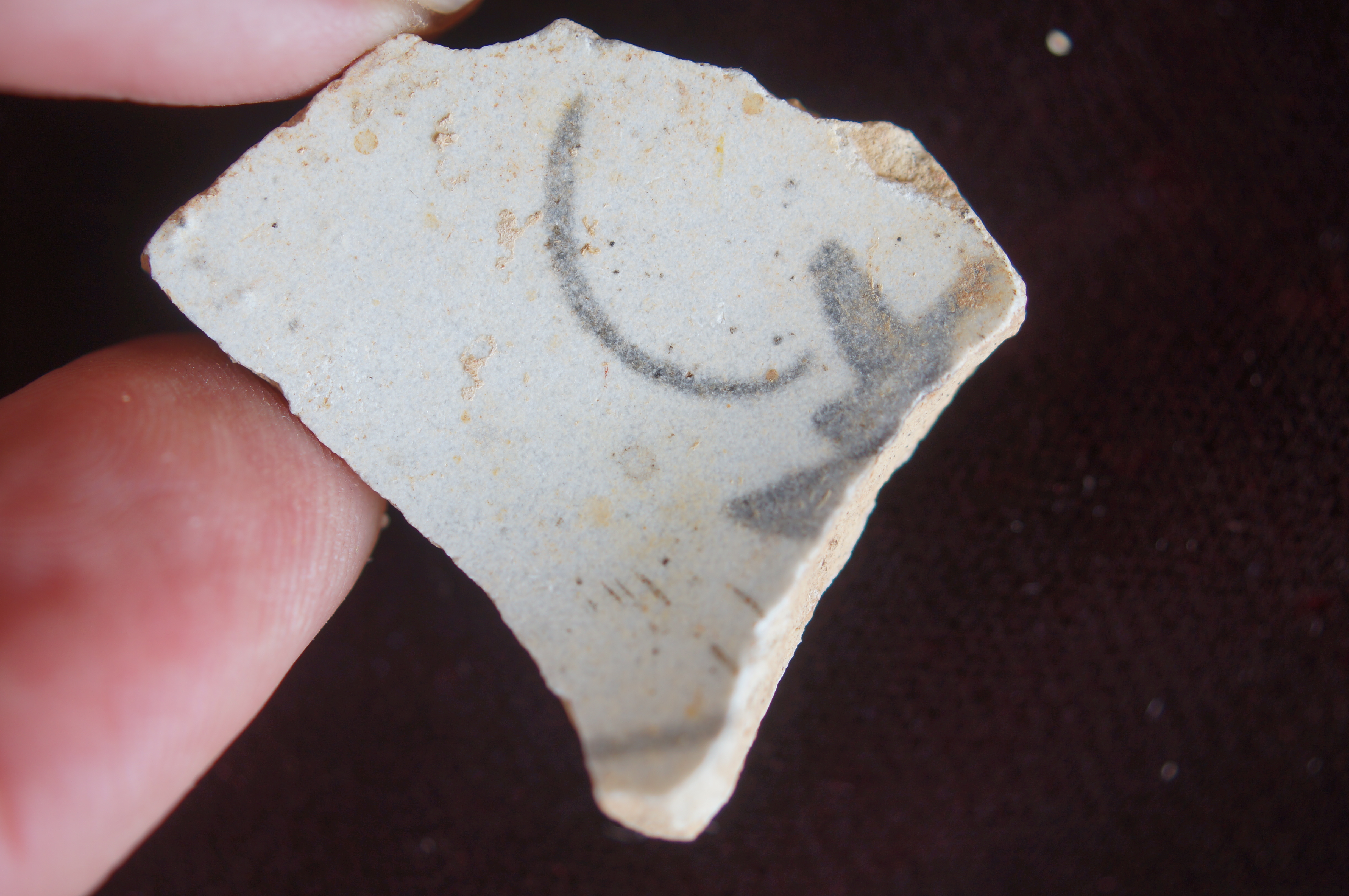
The final example is an important find of the neck of a Yuan dynasty (14th-century) blue and white Yu Hu Chun vase. This artefact was recovered from Square XV on 27 May 2019. This is a significant find because this is the first Yu Hu Chun to be excavated from Fort Canning. A similar sherd of a Yu Hu Chun was excavated from the Victoria Concert Hall site, but it was of a different decoration and form. This Fort Canning discovery is a prime example of high-quality blue and white porcelain produced in Jingdezhen, China. The neck is faceted. The decoration comprises lotus panels surrounding the neck, with two floral garlands placed above the points of the lotus panels (middle centre of the panels), dots and circles within the panels at the narrower tops of the panels, and lozenges in a band along the tops of the panels. Below the panels (broken off) appear to be scrolls/swirls.
